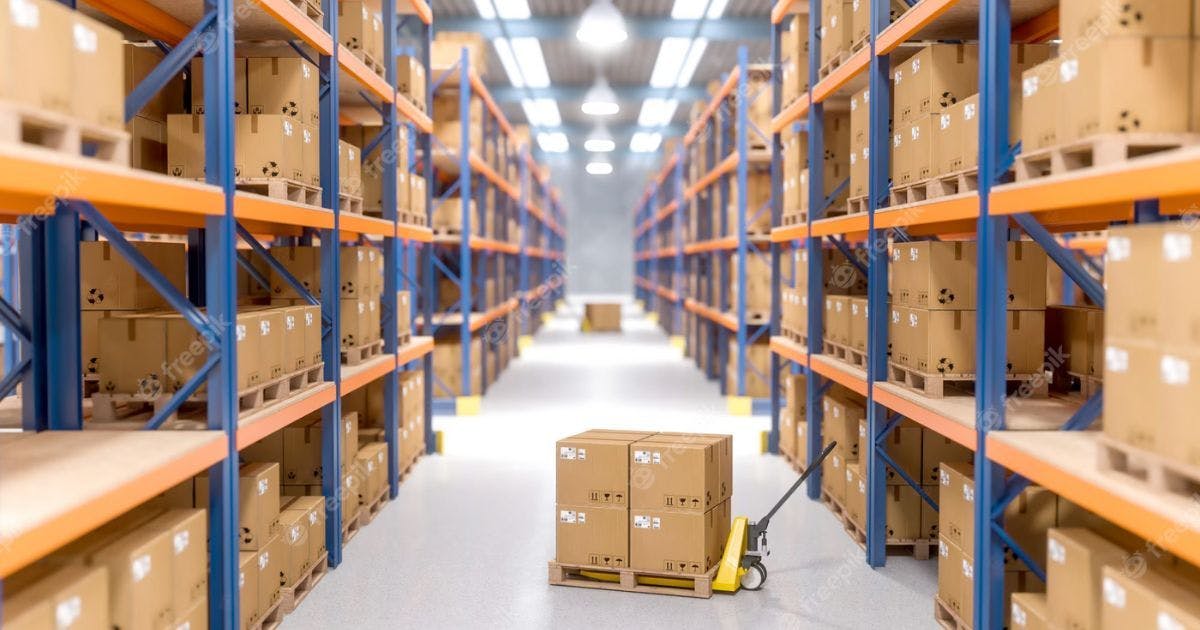Choosing the Right Order Fulfillment Method: Dropship vs Direct Ship

By Pritesh B
Posted | 11 min read
The fight bell has rung and it’s time for the fight of your business life aka which order fulfillment is best for you, one side we have drop shipping and on the other side we have direct shipping. This isn’t any other business street fight I must say. It’s one of the most crucial decisions you need to make for your upcoming business.
As you’re well aware in the world of e-commerce, there are multiple ways to fulfill orders and get your products to customers. Two popular methods are dropshipping and direct shipping. Both methods have their advantages and disadvantages, and choosing the right supply chain for your business can make a big difference in your overall success and growth.
Before we move onto the core part, what exactly is drop shipping and direct shipping?
Dropshipping 101
Dropshipping involves partnering with a manufacturer who holds inventory and fulfills orders on your behalf. When a customer places an order on your website, the supplier ships the product to the customer directly from the warehouse, and you earn a profit margin on the sale.
This means you don't have to hold inventory, handle shipping, or manage returns. You basically outsource products, this is a method where a store doesn’t keep the products.
On the other hand, direct shipping involves holding inventory in-house and fulfilling orders from your own warehouse or through a third-party logistics provider (3PL)/ distributor. This requires more work and investment upfront, but can provide greater control over the customer experience and potentially higher profit margins.
In this article, we'll explore the differences between the two, the advantages and disadvantages of each, and factors to consider when deciding which method of fulfillment is right for your e-commerce business. By the end, you'll have a better understanding of which one is better to help your business succeed.
So without any delay, grab your devices for this drop ship vs direct ship match!
Dropshipping vs Third Party Order Fulfillment
Drop shipping is a method of fulfillment where the retailer has no inventory on hand. Instead, when a customer purchases something on the dropshipper's website, the dropshipper buys the product from a third-party supplier who then ships the product directly to the buyer. It’s a distribution model where the drop shipper doesn't handle the product, and only pays for it after the customer has paid for it. Further making a profit by charging a markup on the product's price.
Direct shipping, also known as self-fulfillment or in-house fulfillment, is a method where the retailer keeps the products in stock and ships them out directly to the respective customers. When a customer purchases a product, the retailer processes the order, picks the product from their inventory, packs it, and ships it to the customer. The retailer is responsible for the entire fulfillment process, from storing inventory to shipping products.
The difference between drop shipping and direct shipping has many aspects, we’ll have a thorough dive in so you can get a better idea of which model is best for your business. Given below are some basis of order fulfillment on which we will be differentiating the two:
1. Inventory Management
One of the main difference between the two is inventory management. In the case of drop shipping, the dropshipper doesn’t keep any inventory on hand and relies completely on the supplier or manufacturer for the inventory and shipping of the product.
Moving onto direct-shipping, in this fulfillment model the merchant is fully responsible for managing the inventory as well as other tasks like purchasing, storing and keeping the products it sells in stock.
2. Control over the Product
This point falls back to the point we stated above, as inventory management plays a major role in control over the product.
In drop shipping, the dropshipper doesn't handle the product, and thus, has limited control over the quality of the product, shipping speed, and packaging. In this case the manufacturer or distributor is solely responsible for keeping a track on shipping and inventory. The merchant relies on the supplier to ship the product.
On the other hand, direct-shipping is a fulfillment method where a store has full control over the product and ensures the quality of the product and the packaging. The merchant is fully responsible for the product, let it be inventory or packaging.
3. Profit Margins
Every business goes to risks to ultimately earn a good profit margin. In a drop shipping form of ecommerce business model, the dropshipping buys products from a supplier at a mark up rate and sells it for a profit to the customers. Here, the merchant doesn’t have any control over the pricing as well because the manufacturer can change it at any time.
In the case of direct-shipping, the merchant buys the products at wholesale prices in bulk and sell it on a higher markup rate. Hence, resulting in more profit margin than the drop ship model.
4. Shipping Times
Shipping time plays a crucial role in these sort of product businesses. With drop shipment model, the shipping times are typically longer since the product is shipped from the supplier's warehouse to the customer's location. So the shipping process relies mostly on the supplier only.
On the contrast, in direct-shipping the product is shipped from the merchant’s warehouse itself using a certain shipping method. One usually goes for some fulfillment services from a distribution center to ship out their packages. This results in a lot more control over the shipping time and faster shipping time.
5. Branding and Customer Experience
In drop shipping, the merchant has limited control over branding and customer experience since the product is shipped from the supplier directly. Instead they can improve their overall branding my working on websites and customer service.
In contrast, with direct-shipping, the merchant has complete control over branding and customer experience and can ensure that the customer has a positive experience with their brand.
Pros and Cons of Drop ship & Direct shipment
Pros of Dropshipping
Low startup costs: One of the top benefits of dropshipping is low start up costs as it eliminates the need to invest in inventory. This means one doesn’t require to purchase a large quantity of products upfront, which can significantly lower the startup costs for an e-commerce business.
Wide product selection:
A dropshipper has access to a wide variety of products. Since they source items from a third party, don't have to worry about storing inventory, they can offer a wider selection of products to their customers. A manufacturer may even give options in certain products.
Scalability:
Drop shipping may allow for easy scalability, it allows business owners and online retailers to grow your business. Since the merchant doesn't have to worry about inventory, they can quickly expand their product offerings without having to worry about storage space or managing additional inventory.
Flexibility:
It allows for flexibility in terms of location. Since there is no need to physically handle the products, one can run their business from anywhere with an internet connection. A single person can a specific business or businesses from the comfort of their home.
Cons of Dropshipping
Lower profit margins:
Since the merchant is not purchasing the products in bulk, which means that they are not receiving the same discounted prices as someone who purchases inventory in large quantities. This can result in lower profit margins for the business.
Lack of control:
Once an order has been placed, the order and shipment details are directly sent to the manufacturer, they drop ship products or goods directly to the customer. Since the products are shipped directly from the manufacturer it can lead to potential issues such as shipping delays or inventory stockouts, which are outside of the merchant’s control.
Competition:
As this is a popular business model between online retailers, there is a lot of competition in the market. This can make it difficult for a merchant to stand out from their competitors while they use drop shipping.
Shipping costs:
Since the manufacturer is the one to ship your products and handle the shipping operations, the merchant doesn’t really play a role in it. Although the merchant is responsible for the shipping fees which can eat into the profit margins, especially if they are offering free shipping to their customers. They also cannot offer services such a 2-day shipping as the products are shipped directly to the customer from the manufacturer using a standard shipping service.
Pros of direct shipping:
Control over inventory:
One of the top benefits of direct shipping, you have full control over your inventory. You know exactly how much stock you have and can manage it as needed after analysing some customer orders.
Better margins:
Because you're handling the order fulfillment yourself, you can eliminate the dropshipping fee that would typically be charged by the supplier. This can lead to higher profit margins.
Faster shipping:
Since you're handling the order fulfillment, you can ensure that orders are shipped out quickly using a direct fulfillment center, which can lead to happier customers and positive reviews.
Better customer service:
You have more control over the customer experience. You can provide personalized and responsive customer service, which can help build customer loyalty.
Cons of direct shipping
Higher upfront costs:
It requires you to purchase and store inventory from the manufacturer or supplier, which can be expensive. You'll need to invest in warehousing space, staff, and equipment. As well as the shipping expenses if you provide free shipping to the customers.
Inventory management:
It does give you more control over your inventory, that also means that you're responsible for managing the amount of inventory. This includes tracking stock levels, ordering new inventory, and handling returns and exchanges. As well as keeping a track of it everytime someone purchases the item.
Shipping limitations:
It is best suited for smaller retailers who only ship domestically. If you're looking to expand internationally, you'll need to find ways to manage international shipping costs and regulations by going for fulfillment companies and keep a track on the shipment tracking information as well as the charges because shipping is much more expensive.
More time-consuming:
This does require more time and effort than dropshipping. You'll need to handle all aspects of order fulfillment, which can be a drain on your time and resources. As you’re going to be responsible for tasks like shipping products directly to customers, inventory management and branding.
Conclusion
In conclusion, both dropshipping and direct shipping have their own pros and cons. It ultimately depends on the specific needs and goals of your e-commerce business. Drop shipping can be a great option for those just starting out or for those looking to expand their product offerings without taking on inventory costs and risks. It allows for more flexibility and the ability to test new products without committing to a large inventory order.
However, it’s important to note that drop shipping also comes with its own set of challenges such as relying on suppliers for product quality and shipping times. Additionally, the profit margins can be lower due to the added cost of using a middleman supplier.
Direct shipping, on the other hand, can offer greater control over product quality and shipping times, as well as potentially higher profit margins due to the removal of the middleman. However, this fulfillment needs a larger upfront investment in inventory and can be more challenging for those just starting out.
Ultimately, the decision of choosing an order fulfillment service should be based on careful consideration of your business needs, goals, and resources. It’s important to weigh the pros and cons of each method and choose the one that best aligns with your business strategy.
Storeplum for business owners
As an e-commerce business owner, you have many decisions to make when it comes to managing your supply chain and logistics. One of the most important decisions every business owner has to make is whether to start dropshipping or direct shipping as your new business and it’s retail fulfillment method.
To choose from a variety of supplier and manufacturer that are out there, is already a huge hassle. While both methods have their pros and cons, choosing the right one can have a big impact on the success of your business. With our above article, we’ve solved that problem already!
However, we at Storeplum strongly believe that having a well-designed and optimized website is just as important as choosing the right fulfillment method. Your website is your online storefront, and it's where potential customers will go to learn more about your brand and products.
A poorly designed or slow-loading website can turn off potential customers and hurt your sales. A good website should have a great range of products without poor order management. It assists you in your fulfillment goals as your business grows.
That's where we come in. With an impeccable experience, we can help you create a flawless and user-friendly website that will help you stand out from your competitors. We specialize in e-commerce websites and understand the unique challenges that come with selling products online and increase traffic everytime a customer may order.
Whether you choose dropshipping or direct shipping, having a strong online presence is key to succeeding in the e-commerce world. With Storeplum, we can help you achieve that!
What's better dropshipping or affiliate?
Statistics have shown that dropshipping is far more lucrative than affiliate commissions. Having said that, the success of dropshipping highly depends on choosing the right product.
Which type of dropshipping is best?
Certain niche products like security cameras, car seat covers and accessories are known to have the most conversion rates. T-shirt printing is also a popular category but it is a very crowded space.
What is direct ship order?
Direct ship order involves holding inventory in-house and fulfilling orders from your own warehouse or through a third-party logistics provider (3PL)/ distributor. This requires more work and investment upfront, but can provide greater control over the customer experience and potentially higher profit margins.

Ecommerce advocate and Co-founder at Storeplum. I like to write about current trends in ecommerce, best practices and innovative ways on improving online store conversions.







